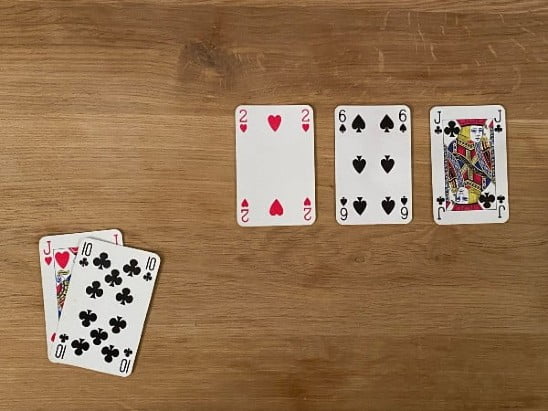Plo8 Rules
- Travek
In this video I explain the rules of Omaha 8, give you some starting hand guidelines, and some tips on how to play your hands post flop.Check out my Full Con. Pot-Limit Omaha Hi-Lo Rules: The most you can bet with Pot-Limit stakes is the total pot size, which includes any amount that has already been bet into the pot on the current street. The stakes in Pot-Limit Omaha Hi-lo refer to the size of the blinds; a $2/$4 PLO8 game has a small blind of $2 and a big blind of $4. No-Limit Omaha Hi-Lo Rules. You may also see PLO8 – this refers to the Pot-Limit betting version of the game. This article provides a simple guide to the rules of how to play Omaha Hi-Lo by running through the play of a hand from before the cards are dealt through to assessing the winning hands at the end.
Also, the aggression levels in PLO8 are usually much lower than they are in NLHE so people won’t. Bet into you nearly as often without a strong hand. In PLO8 when we have a strong hand it is generally better to bet for value than to check and expect the other player to do the betting for you. Slow-playing has little value except against very specific aggressive opponents. Thinking Poker Podcast hosts Andrew Brokos and Nate Meyvis discuss a 6-handed pot-limit omaha 8-or-better event that Andrew played during the World Champions.
- on Book
- on Asia Trip Report Part 1
- on Asia Trip Report Part 1
- on Beginner Guide for PLO8
- on Omaha 8 Podcast Content
Here is a small sample of the information provided in the book:
Play to Scoop, Not to Win Half the Pot
Plo 8 Or Better Rules

This is the most fundamental concept in any split pot poker game. Fully understand and apply this concept and you will have a significant edge on the vast majority of PLO8 players that are out there. This concept will be addressed in more detail in the book. For now, here are a few of the most important reasons not to play for half:
- If you are heads up, your best case scenario is getting your money back.
- Even if it is a multi-way pot, you will often get quartered. This is particularly true if you are going for the low half.
- If you are going for the low half, you can easily get counterfeited and lose the entire pot.
- The negative effects of playing for half are amplified in PLO8 compared to other split pot games because it is a big bet game
Stay away from middle cards
This also goes with the first concept. Having middle cards in your hand kills its strength and makes it very difficult to make the nuts. Middle cards are death in PLO8, especially nines. This will be explained in more detail in the book.
Don’t play only 3 cards in a game that allows you to play 4
In Omaha games you need to make a much stronger hand by the river than you do in a game like Hold’em because everyone has 4 cards instead of 2. So when playing Omaha if you are playing hands that effectively have 3 cards, you are putting yourself at a significant disadvantage. To give yourself the best chance of making a winning hand,
you want to have all 4 cards working together.
It is easier to play if you have some suited cards, even if they are low
One of the few ways in which many players undervalue their hands is by overlooking the how small flush draws contribute to the strength of a hand.
| Hand | Equity Percentile | Equity versus range of hands: | ||||
| Top 5% | Top 10% | Top 20% | Top 50% | All 100% (random) | ||
| 2347 | 63% | 37.6% | 38.7% | 40.6% | 43.9% | 46.5% |
| 2347ss | 38% | 37.9% | 39.0% | 40.8% | 44.1% | 46.8% |
| 2347ds | 21% | 40.4% | 41.6% | 43.5% | 46.8% | 49.5% |
These small flush draws shouldn’t be considered the primary feature of a hand. But they do add equity to a hand, and can add significant equity if the hand is double suited.
The primary benefit when you make these flushes comes when you make them with a non-nut low. If you are in a heads up pot with a decent but non-nut low and a small flush, there are not many hands that your opponent can hold that will scoop you. Typically you will be good for half the pot, and will occasionally scoop. In these situations you can fire away large bets in an attempt to get your opponent to fold, giving you the entire pot instead of half. But with no flush and only a non-nut you would not be able to do this, and often would be forced to fold.

Against most opponents, you will usually have more equity in a given hand than the tables shown below suggest
This is because the tables give your equity against a given range of hands, but most opponents tend to overvalue some hands and undervalue others. So they will have more weak hands in their ranges than there stats suggest. For example suppose a player is playing 20% of his hands. Your equity versus his 20% will usually be better than the theoretically best 20% of hands, because most players will overvalue big pairs and will have some these hands in their range that these tables do not assume.
Think about what you are trying to flop
Different types of starting hands have different types of ideal flop fits. The kind of flop you are looking for can also depend on how many players are in the pot and what your position is. It pays to think about what you are actually trying to flop before the flop comes out. If you do this it will tend to make your play on the flop easier and less stressful.
PLO8 is not a game of trapping
You generally don’t make a lot of money in PLO8 by making hands that dominate your opponent and then getting them to dump their chips off to you.
Consider some situations that often come up in NLHE. It is common for one hand to dominate another before the flop. AK versus AQ, KK versus QQ, and on and on. You can often trap opponents when you have their hands dominated. This is partially due to the nature of the way starting hand equities can dominate one another, but it is also the aggression that many NLHE players have that make it possible to trap them.


Omaha Hi Low Rules
For the most part these things don’t really apply as much to PLO8. Preflop starting hand equities run close to one another. Postflop one hand will often dominate another, but competent players will usually know when they are likely to be dominated. Also, the aggression levels in PLO8 are usually much lower than they are in NLHE so people won’t

bet into you nearly as often without a strong hand.
In PLO8 when we have a strong hand it is generally better to bet for value than to check and expect the other player to do the betting for you . Slow-playing has little value except against very specific aggressive opponents. You should usually be betting out with your strong hands to take advantage of your equity edge. This also balances the times when you are semi-bluffing with marginal hands trying to take advantage of fold equity.
Isolating Limpers
People love to limp when playing PLO8. You will make a lot of profit by attacking them when they do it. When you raise limpers, you should usually raise the size of the pot, unless you want to play a large multi-way pot. This doesn’t mean that you always have to raise; it is often ok to limp behind. If several players have limped and you have a hand that you want to play but don’t want to create a gigantic pot, it’s ok to limp. If you throw in a raise and there are three or four players left to act behind you, there is a huge probability that one or more of the remaining players will call you. Don’t do it with a marginal hand if you may end up out of position. Suppose UTG and UTG+1 both open limp. You are next to act in middle position with A-4-5-9 with no suits and raise pot. Now the cutoff and the button both call. The flop comes 3-8-J rainbow. Now what are you going to do? You would have been much better off had you limped. Save these out of position raises for your stronger AA and A2 hands.
The other thing to consider when you are attacking limpers, is that you should almost never expect to win the pot preflop with your raise. You may get some players to fold. But many players hate to fold after putting chips in the pot, so you should usually expect at least one player to call and to play a flop.
If you have a marginal hand, don’t try to isolate if there is more than one limper. Most of the time both limpers will call, and the blinds could call as well. When this happens you will created a large pot with a marginal hand, which is a really bad idea. With a marginal hand, make sure you are only trying to isolate a single limper. And obviously, the later your position, the better off you will be. Only raise multiple limpers if you have a strong starting hand, one that you want to play a big pot with.
Free Online Omaha Hi Lo
Comments are closed.